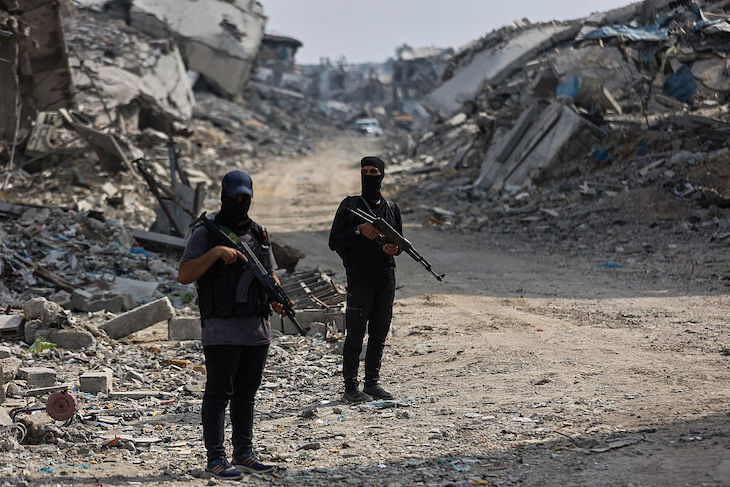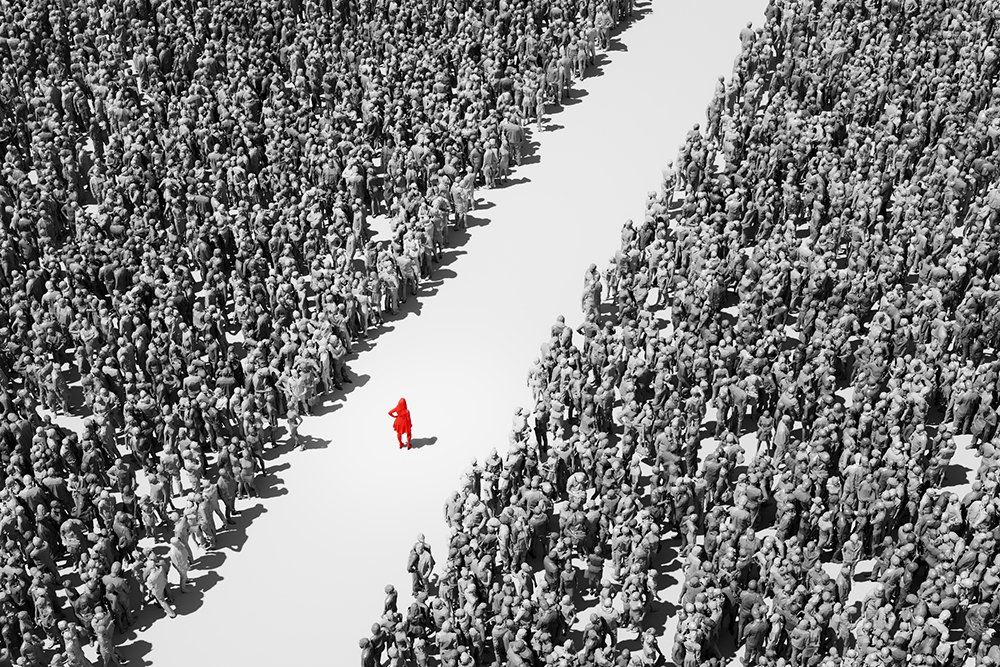In 1929, René Magritte painted a picture that has since become iconic in both art and philosophy. The Treachery of Images depicts a finely detailed tobacco pipe with a caption beneath: Ceci n’est pas une pipe – ‘This is not a pipe’. Magritte’s point is subtle and enduring. It is indeed not a pipe, but an image of one. You cannot fill it with tobacco, light it, or smoke it. It is a representation, not the object itself.
Israel manoeuvres within it, cautiously. Hamas exploits it, selectively. Saudi Arabia nods along, calculating
Magritte was exploring the gap between signifier and reality, between the name and the thing named. His visual paradox is echoed in Alfred Korzybski’s famous aphorisms: ‘The word is not the thing…The map is not the territory.’ Language, maps, and images are abstractions. They guide us through the world, but they are not the world itself.
One might be tempted to recall this lesson when examining the map circulated as part of the Trump-brokered October 2025 ceasefire agreement between Israel and Hamas. The line it draws, known as the ‘yellow line’, purports to demarcate two zones in Gaza: one under Israeli operational control, and one ostensibly governed by the terms of ceasefire. But in practice, this line does not halt fire, nor does it clearly divide peace from war. It, too, might as well bear the legend: Ceci n’est pas un cessez-le-feu.
Since the IDF’s withdrawal to the yellow line on 9 October, a cascade of reported violations by Hamas has steadily chipped away at the illusion. From failure to release all hostages within the stipulated 72-hour window, to mortar fire and incursions across the line in Rafah, Khan Younis, and Shuja’iyya, the evidence is both chronicled and credible: terrorists approaching IDF troops, mortars launched from tunnel openings, small arms fire exchanged, and a pattern of hesitation, delay, and selective compliance on the return of Israeli hostages and bodies.
But the asymmetry is more profound than mere ceasefire violations. What we are now witnessing is a phase of the conflict that defies neat classification. The tempo is slower, the pressure less overt, but the war has not ended. Indeed, Israeli prime minister Benjamin Netanyahu recently told the Abu Ali Express channel that while the intense phase may be over, Israel retains the ability, and intention, to ‘return to fighting on any front.’
This duality is shaping the IDF’s operational logic. One of the most revealing recent episodes continues to unfold beneath eastern Rafah, where Israeli forces uncovered an extensive Hamas tunnel network, over seven kilometres long and buried some 25 metres underground, running beneath schools, mosques, clinics and UN compounds. According to the IDF it contained scores of rooms, weapons caches, and infrastructure used for command and control. It was also reportedly used to hold the body of Lt. Hadar Goldin, an Israeli officer killed during a previous war, whose case has long symbolised Hamas’ subterranean tactics and Israel’s resolve.
In recent weeks, that underground network has become the setting for a tense and lethal standoff. Dozens of Hamas operatives, including senior commanders, were believed to be sheltering inside. Israeli forces have surrounded and monitored the tunnel system with intelligence and drones, opting not to bomb it outright. Instead, they have waited, deliberately, for those inside to either emerge or make a move that breaks the ceasefire framework.
When five Hamas fighters surfaced from one of the tunnel shafts in eastern Rafah, inside the yellow line, they were tracked and eliminated by an Israeli airstrike. In a separate incident, five others who exited the tunnels and surrendered were taken alive for Shin Bet interrogation. These two outcomes, targeted killing and live arrest, underscore a clear strategic message: Israel is not conducting wanton strikes, but operating within a tightly controlled framework that reserves lethal force for those who cross agreed boundaries.This is not peace. It is not even a true pause. It is a form of slow-motion warfare, calibrated for legality, precision, and diplomatic tolerability.
Yet this careful calibration comes with costs. So long as the word ceasefire remains in currency, international actors, from Washington to Riyadh, are invested in maintaining its appearance. Too decisive a strike, too sudden a shift, and the diplomatic facade may crack, forcing allies to react or condemn. Hence Israel proceeds slowly, weighing every move not just for battlefield effect but for reputational risk.
In this delicate balance, each actor speaks the language of calm while preparing for its absence. The map says ceasefire. The field says otherwise. What we are witnessing is not conflict’s end, but its mutation into something less visible, more intricate, governed not by declarations but by calculations.
Israel must calibrate each move for maximum operational gain and minimum diplomatic friction. The United States wants quiet, not clarity. Saudi Arabia seeks room to manoeuvre between compassion and procurement. Europe, having gestured towards Palestinian statehood, prefers ambiguity to consequence. Hamas, bruised but unbroken, wishes to survive without surrendering.
This is, in effect, an arrangement in which no party is fully satisfied, yet each is constrained by a structure too fragile, and too useful, to abandon. The United States, architect of the ceasefire and self-appointed guarantor of its fiction, now acts as informal referee. Washington permits a degree of movement, even violence, so long as no actor derails the broader narrative. It is not peace, but a managed ambiguity – one in which everyone plays a part, and no one tells the whole truth.
Israel manoeuvres within it, cautiously. Hamas exploits it, selectively. Saudi Arabia nods along, calculating. Europe gestures, then retreats. And over it all, the Trump administration – eager to declare victory, allergic to entanglement – curates the image with the hand of a political surrealist, ensuring the illusion holds. It is this White House, more than any battlefield commander, that sends the unspoken message to all sides: you may not like the terms, but you will abide by them.
Perhaps Trump should take back his map of Gaza and add underneath: mets-toi ça dans le pipe et fume-le.








Comments